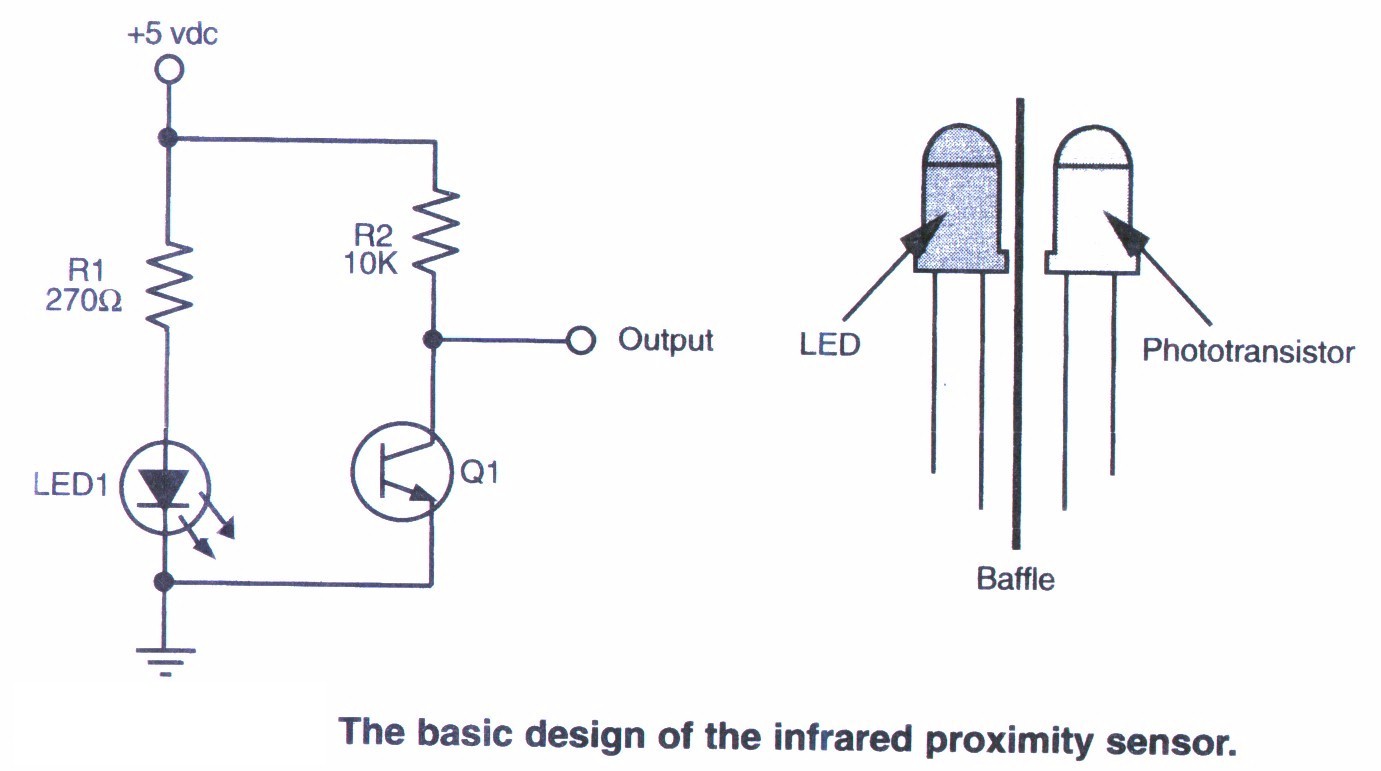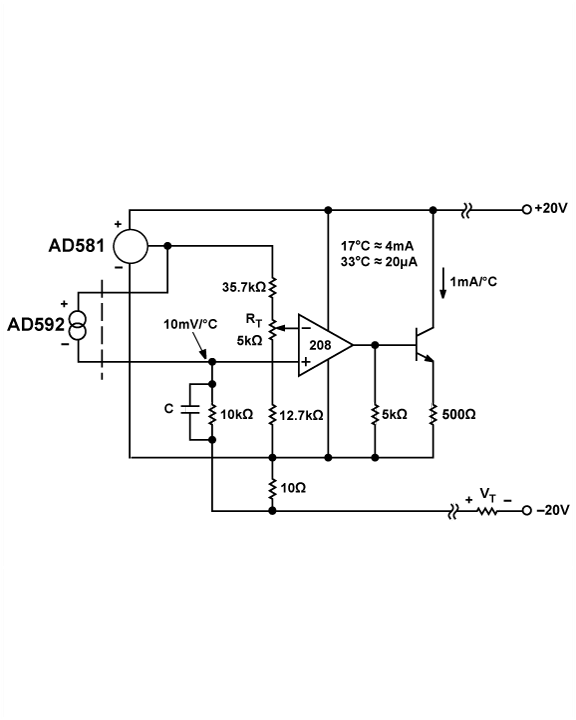
ir sensor

This section provides step-by-step instructions along with images for constructing an infrared (IR) proximity switch. As this is a straightforward circuit, only the schematic for the sensor is presented here. The objective of this tutorial is to assist others in building an infrared proximity switch. Complete construction details and images are included in this tutorial for the sensor. Once the concepts are conveyed, the reader can build an IR switch that can be connected to a robot and utilized as the robot's eyes.
The infrared proximity switch is a simple yet effective circuit designed to detect the presence of nearby objects without physical contact. The core components of this circuit typically include an infrared LED, a photodiode or phototransistor, and a resistor. The infrared LED emits light, which reflects off nearby objects and is detected by the photodiode or phototransistor. When an object comes within a specified distance, the reflected IR light causes a change in the output of the photodetector, which can then be used to trigger other electronic components or systems, such as motors or alarms.
In the schematic, the infrared LED is connected to a power supply through a current-limiting resistor to prevent excessive current flow, which could damage the LED. The photodetector is connected in such a way that it can sense the reflected light. A potentiometer may also be included to adjust the sensitivity of the sensor, allowing for fine-tuning based on the application requirements.
The output of the photodetector can be connected to a microcontroller or a simple transistor switch that can control larger loads, such as motors in a robotic system. This setup allows the IR proximity switch to serve as an effective "eye" for robots, enabling them to navigate their environment by detecting obstacles.
Overall, the design and functionality of the infrared proximity switch make it a valuable component in various applications, including robotics, automation, and security systems. The ease of construction and the availability of components further enhance its appeal for hobbyists and professionals alike.This section gives step-by-step instructions along with photos to the construction of IR Proximity Switch. Because this is a very simple circuit, only a schematic for the sensor is shown here: (For the PDF format click here.
) This tutorial`s objective was to help others built a infrared proximity switch. Complete construction details and photos ar e included in this tutorial for the sensor. Once the concepts were conveyed the reader could build an IR switch which could be connected to a robot and be used as the robot`s eyes. 🔗 External reference
The infrared proximity switch is a simple yet effective circuit designed to detect the presence of nearby objects without physical contact. The core components of this circuit typically include an infrared LED, a photodiode or phototransistor, and a resistor. The infrared LED emits light, which reflects off nearby objects and is detected by the photodiode or phototransistor. When an object comes within a specified distance, the reflected IR light causes a change in the output of the photodetector, which can then be used to trigger other electronic components or systems, such as motors or alarms.
In the schematic, the infrared LED is connected to a power supply through a current-limiting resistor to prevent excessive current flow, which could damage the LED. The photodetector is connected in such a way that it can sense the reflected light. A potentiometer may also be included to adjust the sensitivity of the sensor, allowing for fine-tuning based on the application requirements.
The output of the photodetector can be connected to a microcontroller or a simple transistor switch that can control larger loads, such as motors in a robotic system. This setup allows the IR proximity switch to serve as an effective "eye" for robots, enabling them to navigate their environment by detecting obstacles.
Overall, the design and functionality of the infrared proximity switch make it a valuable component in various applications, including robotics, automation, and security systems. The ease of construction and the availability of components further enhance its appeal for hobbyists and professionals alike.This section gives step-by-step instructions along with photos to the construction of IR Proximity Switch. Because this is a very simple circuit, only a schematic for the sensor is shown here: (For the PDF format click here.
) This tutorial`s objective was to help others built a infrared proximity switch. Complete construction details and photos ar e included in this tutorial for the sensor. Once the concepts were conveyed the reader could build an IR switch which could be connected to a robot and be used as the robot`s eyes. 🔗 External reference





